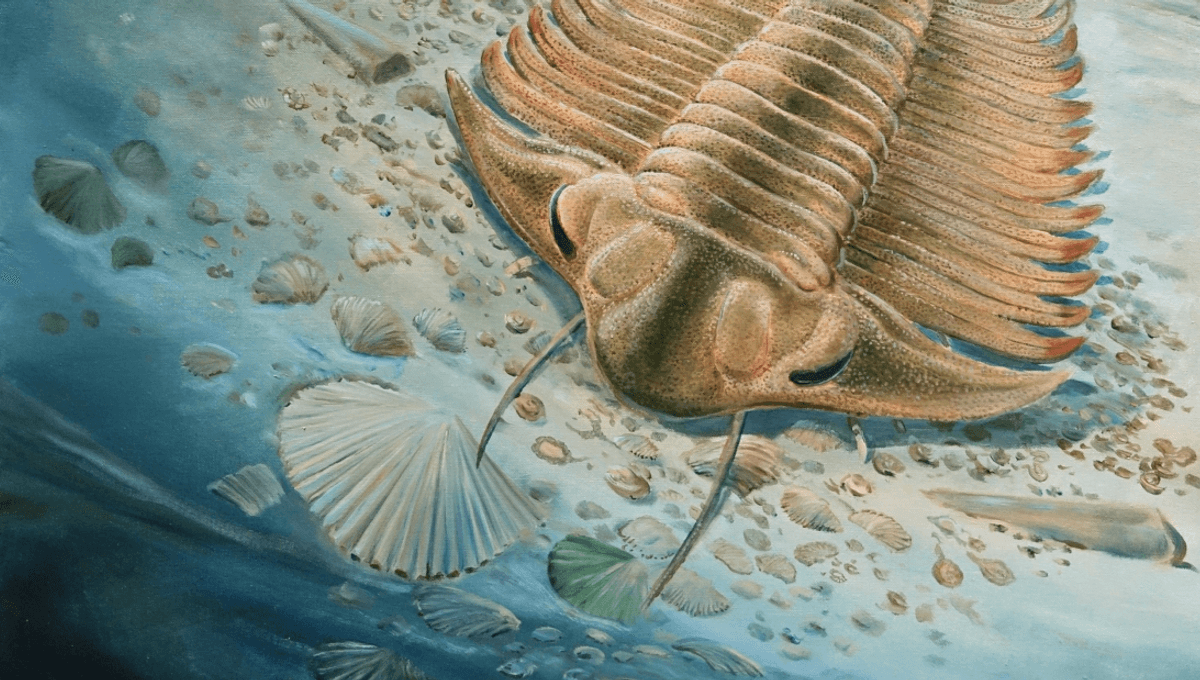
Trilobites are among the most common fossils, some of which include the earliest-known sexual weaponry, and yet for all the specimens we have to work from, nobody’s found any direct evidence of what they had for dinner. Now, a first-of-its-kind fossil has been described that contains preserved stomach contents dating back 465 million years! It’s enough to give you indigestion.
The uniquely well-preserved fossil is a Bohemolichas incola specimen, and it represents the most detailed dietary reference we have for these animals. Dating back to the Ordovician, it was retrieved inside a siliceous nodule, also known as a “Rokycany ball”. These curious balls act sort of like a prehistoric Kinder Surprise that can be cleaved in two to reveal preserved animals.
Many have weathered out of the Šárka Formation of the Prague Basin, Czech Republic, but this one was special as it contained a complete trilobite specimen that even included preserved gut contents. Using propagation phase–contrast synchrotron microtomography (PPC-SRµCT) at the European Synchrotron Radiation Facility (ESRF) in Grenoble, France, researchers were able to take a look at what exactly was sitting in there.
They found small fossils and fragments of shells densely distributed along the digestive tract, made up mostly of ostracods – a crustacean sometimes known as seed shrimp. Other marine animals that had been on the menu 465 million years ago included hyoliths, bivalves, and stylophoran echinoderms, an extinct group of invertebrates related to starfish, sea urchins, and sea cucumbers.
The host of species and their state of degradation indicate that B. incola was an opportunistic scavenger, suggest the study authors. It would’ve combed the seafloor in search of critters – dead or alive – that it could crush up easily or swallow whole, and it would’ve fed opportunistically rather than going on the prowl for specific prey items.
The scavenger would become the scavenged after death, however, as track marks along its carcass show something was nibbling on its soft tissues. Interestingly, whatever it was avoided the digestive system, suggesting that something nasty may have been unfolding here, possibly as the result of ongoing enzymatic activity post-mortem.
“The described specimen of Bohemolichas provides by far the most detailed source of information to date concerning the diet and the feeding mode of trilobites,” conclude the authors. “It appears to have been an indiscriminate feeder on small, shelly, benthic invertebrates, most likely by scavenging rather than active hunting.”
“Bohemolichas gives a unique glimpse of the role of lichid trilobites in an Ordovician marine ecosystem and provides evidence for the great antiquity of pH-neutral digestive physiology in arthropods.”
The study is published in Nature.
Source Link: Rare Fossil Reveals What One Trilobite Had For Dinner 465 Million Years Ago